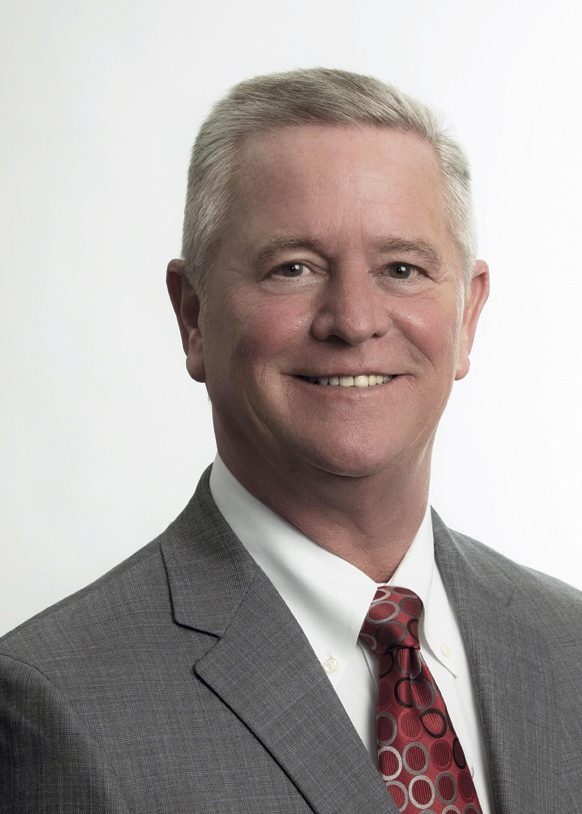Specialty Lines Markets
MORE RISKS FLOW TO E&S MARKETS, BUT AT WHAT COST?
Property CATs and “social inflation” making agents and brokers work harder
By Joseph S. Harrington, CPCU
Would you expect to receive more money after two consecutive years of “weak results”?
That’s what happened to the U.S. excess and surplus (E&S) lines business in 2018, according to Fitch, a leading financial rating agency. The firm’s latest annual review of the E&S market includes this eye-catching subtitle: “Consecutive Weak Results Spur Stronger Revenue Growth.”
According to Fitch, direct written premium for E&S business increased 11% in 2018, the eighth consecutive year of growth and the largest gain since 2012. The trend continued into 2019, with direct written premium in the first half of the year 15% greater than in 2018.
E&S premium amounted to nearly $50 billion in 2018 and now accounts for 7.4% of total property/casualty premium in the U.S. (up from 3.3% in 1998) and 15.7% of commercial lines premium (up from 6.7%).
Yet, even with robust premium growth, the E&S market “significantly underperformed” the P-C market in general, reporting statutory combined ratios of 107% in 2018 and 116% in 2017, compared to a 92% average combined ratio for the previous five years.
The bulk of E&S business is derived from specialty programs developed by commercial carriers operating on a nonadmitted basis.
Fitch explains that, while E&S carriers benefit from the specialized nature of their business and “more attractive competitive dynamics” (e.g., freedom from rate and form filing requirements), E&S underwriting is subject to greater volatility than admitted business.

—Carl Metzger
Partner
Goodwin Procter LLP
Admitted carriers balk
One major reason specialty carriers are capturing more premium while incurring underwriting losses is that accounts being shunned by admitted carriers are coming into the specialty markets.
“Overall market conditions point to faster near-term growth in E&S relative to the broader P-C industry,” Fitch reports. “[This] relates to favorable economic conditions, rate hardening, and movement of underwriting exposures toward nonadmitted markets.
“Reduced admitted insurer appetite for catastrophe-exposed property risks, and limits and capacity reduction in several liability segments, are driving further premium growth in 2019.”
Among admitted carriers that are assuming the risks, observers find they are assuming less of each individual risk, forcing brokers to find more carriers to support an account or a program.
“You need more carriers to put together the same program as you did before,” says Joel Cavaness, president of Risk Placement Services Inc., a managing general agent, underwriting manager, and wholesale broker. He is currently president of the Wholesale & Specialty Insurance Association (WSIA).
“People have to work a lot harder and a lot longer to put deals together,” Cavaness adds. “What used to take several hours now takes several days. Deals are getting done; it’s just more challenging to get them done. This puts pressure on pricing.”
From the perspective of his insured clients, attorney Carl Metzger has much the same observations as Cavaness. Metzger is a partner with the international law firm Goodwin Procter LLP and is the immediate past president of the Professional Liability Underwriting Society (PLUS).
“My sense is that we’re seeing a sea change in how insurers are managing the layers in a D&O program,” he says. “It’s getting hard to build a D&O program with big layers, and insurers are building them in smaller layers.
“Where for years you may have had $10 million layers, today we’re seeing layers of $5 million or even $2.5 million. It’s more work today for brokers to get competitive quotes and put programs together. You need more carriers to build a program.”
Metzger adds that “it’s not just a matter of premium increases, but retention levels also have increased dramatically. Where formerly we saw insured retentions of $1.5 million to $3 million, they are now coming in at $10 million to $15 million and higher.”
The trend is further confirmed for first-party property coverage by Bryant Steele, associate vice president and managing director at Burns & Wilcox, who was recently quoted as saying that “where it used to take only one to three carriers to get full limits on a builders risk policy, now it takes three to 10 carriers.
“It’s a lot more work and the policies look a lot different,” he adds, “but in the end, I think the current situation is better for our industry as a whole and for the end clients.”

—Joel Cavaness
President
Risk Placement Services Inc.
“Social” verdicts
You don’t need to be an insurance expert to understand the reason for the reduced appetite among admitted carriers for property catastrophe risks; media coverage of the damage from hurricanes and wildfires over the past two years tells you just about all you need to know.
As for a reduction in limits and capacity in some segments of liability coverage, that results from certain trends emerging in the nation’s court system.
Recently, leading executives of liability insurers have been sounding the alarm about “social inflation”—a trend of increasing litigation and increased jury awards that threatens to undermine liability underwriting and pricing.
“Of course, you can’t put a number on a loss of life,” says Cavaness, “but some awards are well beyond what we’ve seen in the past. Some are out of line with the actual damages.”
The re-emergence of social inflation was documented in a 2017 report by Assured Partners, a partnership of independent brokers, that cited increased advertising by plaintiffs’ attorneys and increased funding for litigation financing as two factors driving sharp and unexpected increases in defense costs and damages.
The topic was the focus of a panel discussion at the 2019 annual meeting of the American Property Casualty Insurance Association, the nation’s largest trade association for P-C insurers. Carrier and reinsurance executives on the panel commented that the pace of litigation and size of awards were forcing insurers to fundamentally reevaluate underwriting and pricing in liability lines.
The trend is widely seen as originating in commercial auto liability, where multi-million-dollar awards and settlements have become increasingly common and are now expanding into other liability lines.
“As a litigator,” Metzger says, “I’ve seen an increase in the kinds of court actions covered by management liability insurance. The frequency of claims is up, as well as the severity. The number of class action securities filings has increased, as have the typical settlement amounts and the cost of hiring defense attorneys.”
That’s enough to drive away many admitted carriers and increase opportunities for specialty writers in E&S lines, no matter what the results are in the short term.
For more information:
Burns & Wilcox
www.burnsandwilcox.com
Goodwin Procter LLP
www.goodwinlaw.com
Risk Placement Services
www.rpsins.com
The author
Joseph S. Harrington, CPCU, is an independent business writer specializing in property and casualty insurance coverages and operations. For 21 years, Joe was the communications director for the American Association of Insurance Services (AAIS), a P-C advisory organization. Prior to that, Joe worked in journalism and as a reporter and editor in financial services.






